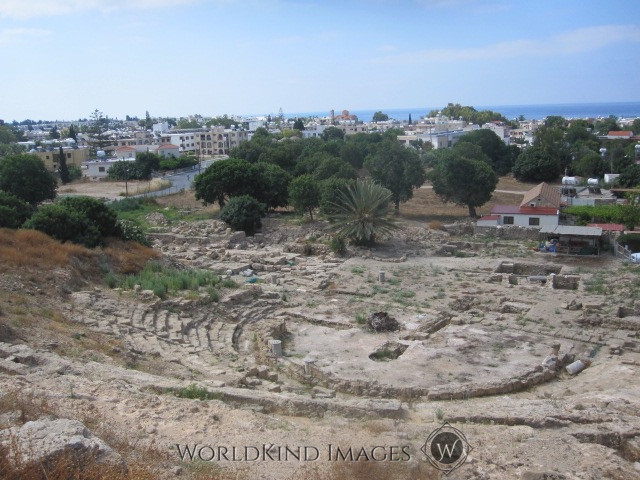Caption:
In the northeast corner of the city of “New Paphos”
lies the Theater District. Today, you can see the partially excavated ruins of this 4th century BCE Greek theatre. According to a sign there, “"Systematic excavations which began in 1995 have uncovered large parts of the building. It consists of a semicircular auditorium whose central part was cut into the natural rock of the hill and the rest was supported on an artificial earthen embankment. The surface of stone was covered with cement and then with a fine hard plaster imitating marble."Keywords: 4th Century BC,
4th Century BCE,
Cistern,
Cyprus,
Greek Theater,
Hellenistic Theater,
Nea Paphos,
New Paphos,
Paphos,
Theater,
Theater District,
ancient theater,
archaeology 

